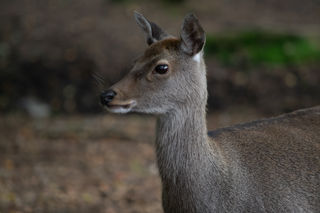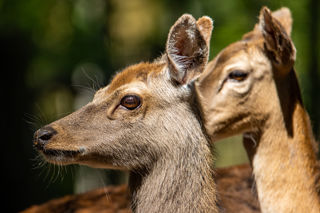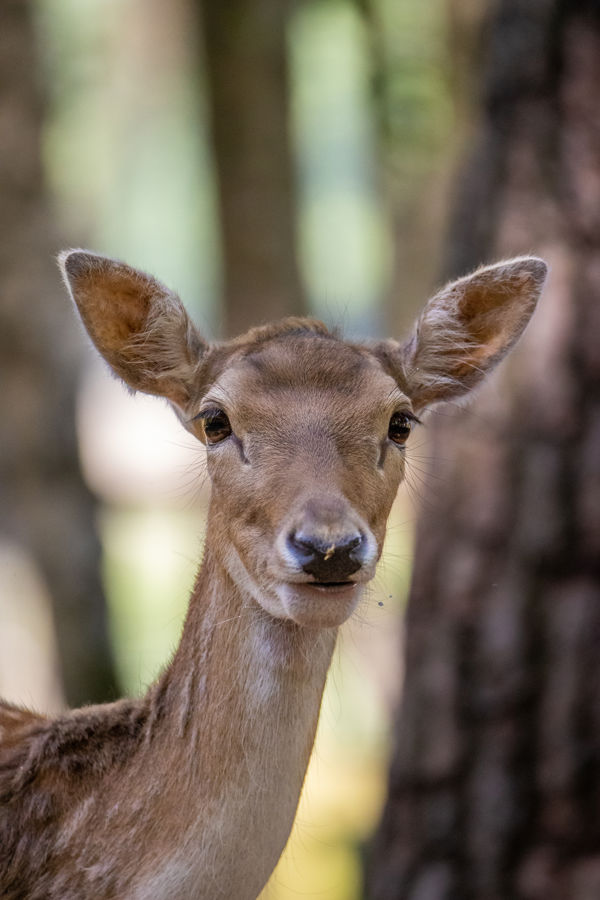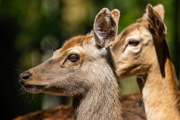Sika Deer

General information
The name Sika comes from “shika”, the Japanese word for deer.
The Sika Deer is similar in size and colouration to the Fallow Deer, with white spots in the summer and a darker coat in the winter. The main differentiation between a Sika and a Fallow is a smaller head, shorter tail and a distinctive white heart shape on their bottom. Sika stags have stout upright antlers and the females have 2 distinctive black bumps on their forehead. Their diet consists of grasses, heather, shoots, sedges and occasionally tree bark. Unfortunately this invasive deer species and our native red deer can mate, which is a serious conservation concern due to hybridisation.
Males and females will live separately for the majority of the year until the rut begins (breeding season). The rut takes place from September to November, where males will compete for or defend their females. This is then followed by a gestation period of 7½ months where a female will then have one calf. This calf will reach independence by 10 to 12 months old.

Latin name - Cervus nippon
Class - Mammalia
Order - Cetartiodactyla
Family - Cervidae
IUCN Status - Least concern
Habitat - Woodlands, forests, heaths, meadows, parkland etc
Distribution - Native to East Asia but introduced to many countries including UK
Average Lifespan
15 years
Threats
Habitat loss, water pollution and poaching.
Fun Fact
In the 1900’s, King Edward VII gifted the Baron Montagu of Beaulieu a pair of Sika Deer. It is some of their progeny that escaped and now populate the New Forest.
Our Residents
In the Deer Encounter, we have one Sika Deer hind. Saffy joined us after being involved in a road traffic accident in 2014, needing a permanent home.

Sign up to our newsletter
Join our mailing list in order to keep up to date with park news and special offers.




